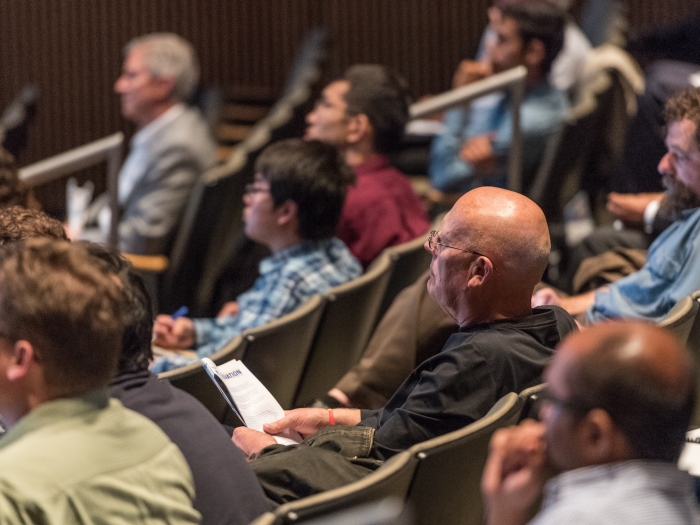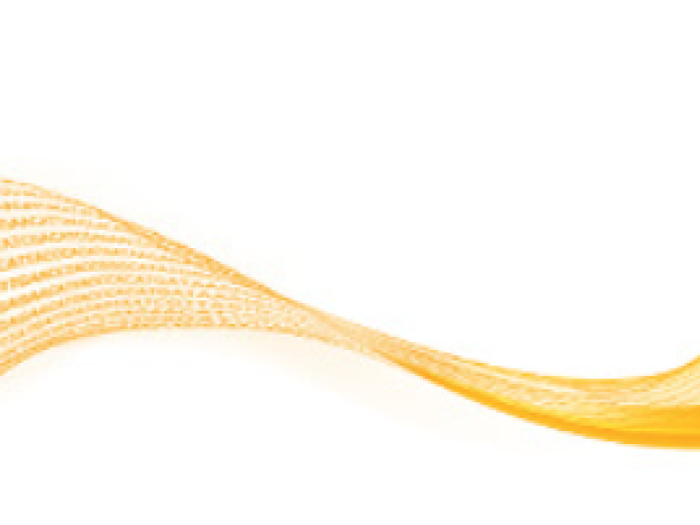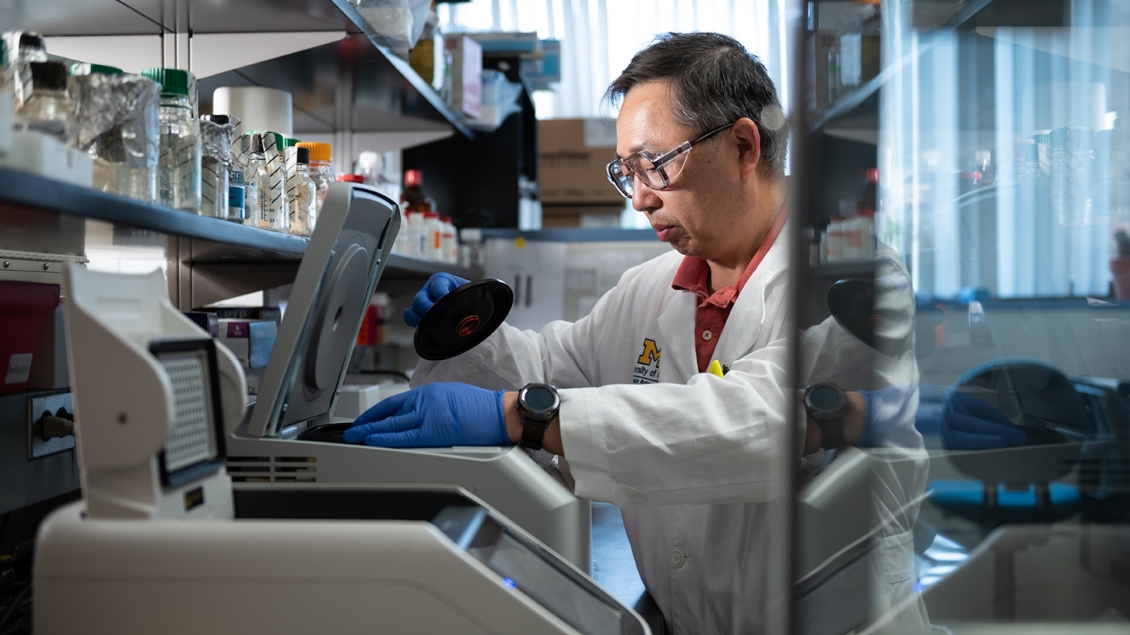
Providing access to transgenic animal technology in an efficient, effective manner.
The Transgenic Animal Model Core was established in 1989 in response to the need for transgenic technology by University Investigators. Researchers can use Transgenic Core laboratory space and resources side-by-side with staff members. Consultation in all phases of genome editing (CRISPR/Cas9), transgenic, and gene targeting research from experimental design to mouse breeding is freely available. The Core’s mission is to provide access to a complex technology so that investigators can focus their resources on research instead of developing tools for research.
The Transgenic Core routinely uses CRISPR/Cas9 to produce gene-edited mice and rats, and guarantees that at least three transgenic founder mice or rats will be produced for every transgene DNA construct. Since 1989 the Core has produced more than 20,000 transgenic mouse founders from more than 2,000 transgenes and more than 1,000 transgenic rat founders. Since 2013 the Core has produced over 3,000 transgenic mouse founders from over 300 CRISPR/Cas9 projects, 16 CRISPR/Cas9 mediated rat models have been completed. CRISPR/Cas9 technology was used for gene knockouts, codon changes, epitope tags, floxed genes, reporter knockins (EGFP, Cre recombinase, etc.), ROSA26 knockins, and specialized projects (regulatory sequence knockouts, ES cell engineering, etc.). Over 200 mouse strains have been produced for genes targeted in ES cells in the Core and another 60 strains from ES cells obtained from the International Knockout Mouse Consortium. In addition, the Transgenic Core offers a full suite of cryopreservation and assisted reproduction (IVF) services. The efficiency of transgenic mouse and rat model production meets or exceeds standards in the published literature.
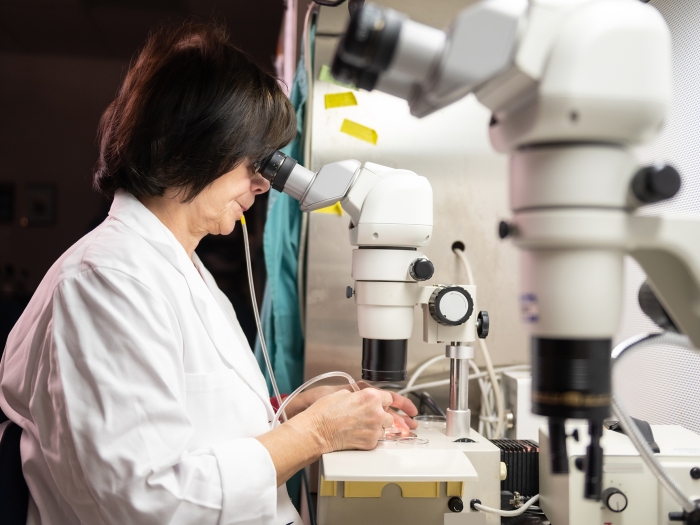
Review the services offered as well as service descriptions, material transfer agreements, and sample preparation.
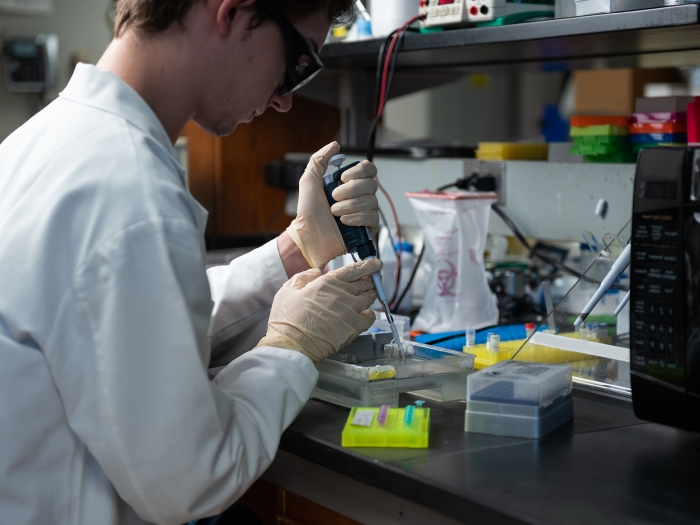
View example syllabi and submission instructions, and explore laboratory protocols as well as specific outlines on topics such as, mouse breeding, gene targeting, and transgenic mice and rats.

Laboratory, genotyping protocols, and mouse breeding
“As someone working with mouse mutants for more than 30 years, my latest experience with the Transgenic Animal Core was truly exceptional. All I did was give the Core a gene name. The Core designed the whole strategy, including the CRISPR guide RNAs and the template for introducing two LoxP site to make a conditional floxed allele. A process that would have taken many years was finished within 4 months, generating at least 3 independent founder mice with the correct targeted floxed allele. The speed and accuracy of gene targeting has never been better.”
Fees below are for internal customers only. If you are an external customer, contact the core for pricing. Please see our Services page for more information on available services.
Subsidies on Services are Available to Members of University of Michigan Research Centers:
- University of Michigan Cancer Center
- University of Michigan O'Brien Kidney Research Core Center
- University of Michigan Gastrointestinal Peptide Center
| Service Offered | Cost | Description |
| B6SJLF2 Hybrid Transgenic Mouse Production | $3,700.00 | The Transgenic Core guarantees that at least 3 transgenic founders will be produced from your transgene DNA. |
| C57BL/6J Transgenic Mouse Production | $5,800.00 | The Transgenic Core guarantees that at least 3 transgenic founders will be produced from your transgene DNA. |
| Custom Genetic Background Transgenic Mouse Production | $6,800.00 | The Transgenic Core guarantees that at least 3 transgenic founders will be produced from your transgene DNA; The investigator will pay shipping and per diems costs for custom donor strains. |
| Sprague Dawley Outbred Transgenic Rat Production (other strains available) | $11,000.00 | The Transgenic Core guarantees that at least 3 transgenic founders will be produced from your plasmid transgene DNA. The Core will purify DNA for microinjection from restriction enzyme digested plasmid DNA provided by the Investigator. The investigator will pay shipping and per diems costs for custom donor strains. |
| CRISPR/Cas9 Reagents | $1,100.00 | The Transgenic Core will build CRISPR/Cas9 reagents to target a specific location in the mouse or rat genome. |
| CRISPR/Cas9 Zygote Microinjection Test | $390.00 | The Transgenic Core will microinject CRISPR/Cas9 reagents into 30 fertilized mouse eggs and culture surviving eggs to the blastocyst stage (~60 cells). The blastocysts will be placed in PCR tubes provided by the investigator for analysis of Cas9 activity in the investigator's laboratory. |
| B6SJLF2 Hybrid CRISPR Modified Mice | $3,700.00 | The Transgenic Core guarantees that at least 300 fertilized mouse eggs will be microinjected with CRISPR/Cas9 reagents. Microinjected eggs will be transferred to pseudoopregnant female mice. Tail tip biopsies will be provided to the Investigator's laboratory for genotyping. Mouse pups will be transferred to the investigator at weaning. |
| C57BL/6J CRISPR Modified Mice | $5,800.00 | The Transgenic Core guarantees that at least 300 fertilized mouse eggs will be microinjected with CRISPR/Cas9 reagents. Microinjected eggs will be transferred to pseudoopregnant female mice. Tail tip biopsies will be provided to the Investigator's laboratory for genotyping. Mouse pups will be transferred to the investigator at weaning. |
| Sprague Dawley CRISPR Modified Rats (other strains available) | $11,000.00 | The Transgenic Core guarantees that at least 300 fertilized rat eggs will be microinjected with CRISPR/Cas9 reagents. Microinjected eggs will be transferred to pseudoopregnant female rats Tail tip biopsies will be provided to the Investigator's laboratory for genotyping. Rat pups will be transferred to the investigator at weaning. |
| Mouse Sperm Cryopreservation | $1,100.00 | Mouse sperm is cryopreserved and stored in liquid nitrogen for recovery of live mice at a future date. |
| Mouse in vitro Fertilization with fresh or frozen sperm | $2,500.00 | In vitro fertilization will be used to produce large numbers of live mice from live male sperm donors OR Recovery of live mice from cryopreserved mouse sperm by in vitro fertilization. |
| Mouse 2-Cell Egg Cryopreservation | $1,800.00 | Mouse embryos (2-cell or 8-cell eggs) are cryopreserved and stored in liquid nitrogen for recovery of live mice at a future date. |
| Cryopreserved Mouse Egg Thaw and Line Recovery | $1,300.00 | Recovery of live mice from cryopreserved mouse embryos. |
| Rat Egg Cryopreservation | $3,000.00 | Rat egg donors and sperm donors will be used to produce fertilized eggs that can then be used to cryopreserve the rat line. |
| Liquid Nitrogen sample storage (annual fee) | $450.00 | Cryopreserved mouse embryos (2-cell or 8-cell eggs) or cryopreserved mouse sperm are stored in liquid nitrogen for a period of 3 years. |
| Rederivation of Pathogen Free Mouse Lines | $1,200.00 | Pathogen Free Rederivation of Infected Mice. |
| CRISPR/Cas9 - ES Cell Training Class | $1,900.00 | The purpose of the class is to provide training in the use of CRISPR/Cas9 technology and to provide the scientific background needed to make genetically engineered mouse models, rat models or engineered mouse ES cells. You will learn both methods and the principles behind the technology. You will be trained in all aspects of ES cell culture manipulation and the scientific background needed to produce gene targeted ES cell lines and mouse models. You will learn the methods and the principles of mouse genome engineering technology. |
| Pronuclear Microinjection Training | $5,200.00 | Hands-on training in the pronuclear microinjection of fertilized eggs to produce transgenic founder animals. It is common for trainees to successfully produce founders. |
| ES Cell Electroporation (five 96-well plates of ES cell clones) | $5,300.00 | The Transgenic Core will recover live cell cultures from ES cell clones stored in frozen 96-well plates and characterize them. |
| ES Clone Expansion | $1,300.00 | The Transgenic Core will place ES cell clones in culture. The cells will be cultured until several vials can be cryopreserved. The investigator will receive a cell pellet from which DNA or RNA can be extracted for verification of correct gene targeting in the cells. Twenty chromosome spreads will be counted and the modal chromosome number will be used to determine if the cells are euploid. The cells will be tested for mycoplasma contamination and assessed for gross differentiation. |
| Blastocyst Microinjection of ES cells | $4,600.00 | The Transgenic Core guarantees that at least 50 blastocysts will be microinjected with ES cells to produce ES cell-mouse chimeras for the investigator. |
| Bacterial Artificial Chromosome DNA Purification | $360.00 | BAC DNA will be purified from a bacterial stock. BAC DNA quality will be evaluated by pulsed field gel electrophoresis and restriction enzyme mapping. |
| Sperm ICSI | $1400.00 | IntraCytoplasmic Sperm Insertion (ICSI) in mouse oocytes is used to recover a mouse line from sperm when standard IVF methods are unsuccessful. |
| Mycoplasma Test | $180.00 | Media from cultured cells is evaluated for the presence of mycoplasma with the Lonza MycoAlert Mycoplasma Detection Kit. |
Impact of stress on cardiac phenotypes in mice harboring an ankyrin-B disease variant.
Wallace MJ, Malhotra N, Mariángelo JIE, Stevens TL, Young LJ, Antwi-Boasiako S, Abdallah D, Takenaka SS, Cavus O, Murphy NP, Han M, Xu X, Mangoni ME, Hund TJ, Roberts JD, Györke S, Mohler PJ, El Refaey M.
J Biol Chem. 2023 Jun;299(6):104818. doi: 10.1016/j.jbc.2023.104818. Epub 2023 May 12.
PMID: 37182735
Gao J, Skidmore JM, Cimerman J, Ritter KE, Qiu J, Wilson LMQ, Raphael Y, Kwan KY, Martin DM.
CHD7 and SOX2 act in a common gene regulatory network during mammalian semicircular canal and cochlear development. Proc Natl Acad Sci U S A. 2024 Mar 5;121(10):e2311720121. doi: 10.1073/pnas.2311720121. Epub 2024 Feb 26. PMID: 38408234
Chen C, Ziobro J, Robinson-Cooper L, Hodges SL, Chen Y, Edokobi N, Lopez-Santiago L, Habig K, Moore C, Minton J, Bramson S, Scheuing C, Daddo N, Štěrbová K, Weckhuysen S, Parent JM, Isom LL. 2023.
Epilepsy and sudden unexpected death in epilepsy in a mouse model of human SCN1B-linked developmental and epileptic encephalopathy. Brain Communications. Volume: 5. Issue: 6. https://doi.org/10.1093/braincomms/fcad283
Mohan HM, Trzeciakiewicz H, Pithadia A, Crowley EV, Pacitto R, Safren N, Trotter B, Zhang C, Zhou X, Zhang Y, Basrur V, Paulson HL, Sharkey LM
RTL8 promotes nuclear localization of UBQLN2 to subnuclear compartments associated with protein quality control. Cell Mol Life Sci. 2022 Mar 5;79(3):176. doi: 10.1007/s00018-022-04170-z.
PMID: 35247097
Lartey NL, van der Ent M, Alonzo R, Chen D, King PD.
A temporally-restricted pattern of endothelial cell collagen 4 alpha 1 expression during embryonic development determined with a novel knockin Col4a1-P2A-eGFP mouse line. Genesis. 2023 Jul 27:e23539. doi: 10.1002/dvg.23539. Online ahead of print. PMID: 37501352
The Transgenic Core routinely prepares genetically modified mice and rats for University of Michigan investigators (transgenic mice, transgenic rats, knockout mice, and knockout rats). These animals can be used to study gene function, gene expression, gene regulation, to develop animal models of human disease, to test gene therapy reagents, to establish cell lines from specific cell types transformed in vivo, to produce mice with tissue-specific inducible gene expression or tissue-specific gene deletions, or to study the effects of cell specific ablation with toxigenes.
We provide access to our micromanipoulation and embryos stem cell workstations along with necessary reagents:
- specialized plasmids
- embryonic stem (ES) cell lines
- FBS
- feeder cells certified for ES cell culture.
The Transgenic Core provides assisted reporductive technology for mice and rats including:
- in vitro fertilization to exand animal colonies or to prepare 2-cell eggs for cryoperservation
- cryropresrvation of 8-cell eggs
- sperm cryopreservation
- recovery of live animals from cryopreserved materials
- intracytoplasmid sperm insertion (ICSI)
The Transgenic Core derives specific pathogen free mice or rats from pathogen infected animals.
Hands-on training is proved to individuals in all aspects of transgenic technology.
Refer to the list of services.
View the submission instructions.
University of Michigan investigators review the fee schedule.
Members of the following University of Michigan centers receive discounts:
- Comprehensive Cancer Center
- Rheumatic Diseases Research Core Center
- Michigan Diabetes Research Center
- Michigan Gastrointestinal Peptide Research Center
- Michigan George M. O’Brien Renal Core Center
To submit a request for services please Login or Sign Up at our:
Plasmids and Cells Available with Material Transfer Agreements
The Transgenic Core prioritizes all requests for service on a “first-come, first-serve” basis. This standard is applied to everyone equally, even our faculty directors. Typically ES cell work is scheduled one to three months ahead. Since the inception of the Transgenic Core our policy has been that no project, whether it be gene targeting in ES cells or a transgenic mouse model, will enter the work queue until all of the required materials are provided. This includes both scientific materials, such as DNA samples and genotyping tests, and paperwork, such as approval to use animals in research, material transfer agreements and billing information.
Both transgenic and gene targeting efficiencies are excellent. We guarantee that at least three transgenic founders will be produced (the average number is 10). Since 1989 over 7000 transgenic founders were produced from over 700 transgene constructs as of September 2003. These efficiency of transgenic production equals or exceeds values in the published transgenic mouse literature. The efficiency of all steps in gene targeting compare favorably with literature values. Multiple embryonic stem (ES) cell lines have been imported and screened for germline chimera formation. In addition, we have developed our own 129X1/SvJ ES cell line “Pat5”. See the list of ES cell lines. We have collaborated with investigators to generate 70 new strains of mice (as of September 2003) from ES cells with mutations introduced by recombination with targeting vectors.
We provide advice on all aspects of this technology from experimental design to mouse breeding. We can provide protocols and training for every step in the process of generating transgenic or gene targeted mice. We are ready to interact, our doors are open, please contact us with any questions.
Any project that uses mice must be approved by the Institutional Animal Care & Use Committee (IACUC). Contact the Animal Care & Use Office for information on how to apply for permission to use vertebrate animals in research, testing, or teaching. The Unit for Laboratory Animal Medicine (ULAM) provides animal housing and veterinary care to all animals on campus. Investigators approved for animal research are expected to provide ULAM with a shortcode that can be used to pay for veterinary care and husbandry/housing costs. Transgenic Core submission forms require the following information:
- IACUC protocol approval number
- ULAM shortcode number for animal housing and veterinary care
Referencing The CCSG:
When referencing the Core Grant in any of your publications or other materials, please use the following citation:
This research was supported (in part) by the National Institutes of Health through the University of Michigan’s Cancer Center Support Grant (P30 CA046592).
Referencing Shared Resources:
Please remember our Cores! When referencing any Cancer Center supported core in any of your publications or other materials, please use the following citation:
This research was supported (in part) by the National Institutes of Health through the University of Michigan’s Cancer Center Support Grant (P30 CA046592) by the use of the following Cancer Center Core(s): xxx
A transgenic mouse or rat has a transgene in addition to its normal complement of genes. A transgene is an artificial gene cloned in the lab by recombinant DNA technology and microinjected into fertilized mouse or rat eggs. Eggs are transferred into foster mothers for gestation. Transgenic progeny are bred to produce a line. Transgenes integrate randomly into chromosomal DNA and are transmitted as a Mendelian trait.
The Core is available for consultation on all phases of transgenic research. The investigator designs and clones the transgene and develops a genotyping assay with single gene copy sensitivity, usually PCR based. A genotyping assay that detects an endogenous single copy gene in the mouse or an endogenous gene in the rat is a necessary positive control. The assays for the transgene and the endogenous gene are used to test all potential transgenic founder mice or rats. The combination of assays eliminates both false negatives and false positive mis-identifications. Transgene DNA is purified by the Transgenic Core for microinjection from a restriction digest supplied by the investigator. The Core microinjects DNA into fertilized (C57BL/6 X SJL)F2 eggs and transfers the eggs into pseudopregnant mice. Alternatively, we will make transgenic mice in other genetic backgrounds, upon request. We have successfully made transgenic mice in C57BL/6 X SJL)F2, FVB/N, C57BL/6, (C57BL/6 X DBA/2)F2, SWR, B10D2 congenic strains, and mutant strains such as mnd2, Myo15sh2, and C57BL/10ScSn-Dmdmdx/J. When the pups are 2 weeks old, the Core applies ear tags and obtains tail biopsies from the mice. The Core will provide the tail biopsies to the investigator. Investigators may prepare genomic DNA from tail biopsies by hand or by any of the numerous kits on the market (see Protocols). The investigator will identify the transgenic mice by PCR. The transgenic mice are transferred to the investigator for breeding and analysis of transgene expression.
We guarantee that you will receive 3 or more transgenic mice or rats, however we can not guarantee transgene expression or transmission. The best strategy is to use a promoter that is already well characterize in transgenic mice or to employ very large flanking regions greater than 10 Kb. Alternatively, a bacterial artificial chromosome can be used to direct gene expression. BACs are include over 100Kb of genomic DNA sequence and often direct gene expression in a fashion which close matches the expression of endogenous genes.
The yield of transgenics is optimized by injecting highly purified linear DNA fragments with overhanging ends. Remove as much vector sequence as possible from the construct since prokaryotic sequences inhibit transgene expression. Although not a guarantee, demonstrated expression in a cell line is a positive indicator of in vivo expression and provides a rapid, inexpensive method to demonstrate that the transgene has been constructed properly. Contact [email protected] for more information on transgene design.
We guarantee that you will receive a minimum of three transgenic founders, often more. The purity of the microinjection DNA is the single most important factor which determines how many transgenic founders will be produced. Another very important parameter is the reliability and sensitivity of the screen for the transgene.
If you believe that your construct may be lethal, we will co-inject a neutral DNA fragment as a marker. If your transgene is not lethal then mice with both the transgene and neutral marker will be detected. However, if only mice with the neutral marker are detected then the construct is likely to be embryonic lethal. Alternatively you choose to examine transgenic founders. Transgenic embryos can be analyzed at various developmental ages to determine the time of death during gestation.
For the majority of transgenes the copy number does not correlate with expression level. The exceptions occur when large genomic fragments are used to make transgenics. Examples include P1 clones (90 Kb), BACs (180 Kb,) or YACs (400 Kb). Some reports suggest that if you use locus control regions or matrix attachment regions around your transgene that you may be able to insulate if form integration effects. Previous work in the literature has shown that attempts to produce low copy numbers by microinjecting dilute DNA does not affect copy number, but does reduce the overall yield of transgenic mice.
The size of your transgene should not interfere with transgenic mouse production. Large transgenes may be difficult to clone. You may wish to consider BAC recombineering to produce large transgenes under the control of regulatory elements in the BAC. The Core has produced transgenics from Bacterial Artificial Chromosomes up to 180 Kb in size. There are reports in the literature of transgenic mice produced from the microinjection of 90 Kb P1 clones, 248 Kb yeast artificial chromosomes, and even microdissected chromosome fragments.
Gene targeted mice are derived from embryonic stem (ES) cells. ES cells are manipulated in culture by introducing a targeting vector that is cloned in the lab by recombinant DNA technology. The targeting vector DNA precisely replaces a segment of chromosomal DNA (hence the name “gene targeting”) in the ES cell. ES cells are injected into a normal mouse blastocyst where they mingle with the embryo’ s cells to form the developing mouse. Up to 100% of the resulting mouse chimera can be formed from cells descended from the ES cells. ES cell-derived-mouse chimeras are bred to normal mice to produce progeny carrying the targeted gene which is transmitted as a Mendelian trait.
The major stumbling block in this process is the identification of ES cell clones that have undergone homologous recombination between the targeting vector and the chromosome in the ES cell. To maximize a successful outcome: 1) make sure that the genomic DNA in your targeting vector is isogenic with the ES cell line question and 2) develop a hybridization screen that will detect your wild type gene in 2 ug of genomic ES cell DNA. We encourage you to contact [email protected] for a consult on your targeting vector design and on all phases of gene targeting research. The first step in the process is to obtain and map and sequence a 129X1/Sv genomic clone of the gene of interest. A 129X1/Sv library is available for screening from the core. The investigator designs and clones the targeting vector and purifies it for electroporation into embryonic stem (ES) cells. The Core has numerous plasmids designed for targeting vector construction. The targeting vector is then electroporated into ES cells by Core personnel, clones are picked after drug selection, the clones are cryopreserved at -80 C while the investigator screens DNA from the clones to identify those which have undergone homologous recombination. Alternatively, the Core will train you in ES cell culture and provide you with quality tested reagents and space in the multi-user Mouse Embryonic Stem Cell Laboratory so that you can do the work yourself. After the investigator isolates euploid ES clones which have undergone homologous recombination with the targeting vector they are microinjected into mouse blastocysts and transferred into pseudopregnant recipients. When the resulting pups are three weeks old, they are scored for ES cell contribution and transferred to the investigator for breeding and analysis.
- Characterize the genomic structure of your thoroughly.
- Develop a sensitive screen for homologous recombination in the ES cells.
- Consider the biological consequence of the mutation you introduce.
We can guarantee that we will inject your embryonic stem (ES) cells into a minimum of 50 blastocysts for ES cell-mouse chimera formation. Because of the intrinsic variability in individual ES cell clones, we can not guarantee that chimeras will be produced or that they will transmit your targeted gene through the germline. Therefore, we recommend that you provide at least three clones for microinjection. In collaboration with other labs on campus, we have successfully targeted over 60 genetic loci. We are confident in that we can work with you to genetically engineer new strains of mice that carry novel mutations of value to your research. The Core provides plasmids for gene targeting, ES cell lines that have been tested for germline chimera formation, feeder cells for ES cell culture, FBS tested for ES cell culture, and training in the exacting techniques required for successful ES cell culture. Contact [email protected] for more information on gene targeting projects.


1150 West Medical Center Drive
Ann Arbor, MI 48109

